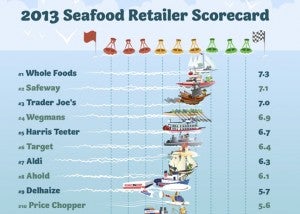According to the World Health Organization, pedestrians are among the most vulnerable road users, accounting for 22% of the total 1.24 million road traffic deaths each year. The Second United Nations Global Road Safety Week (6–12 May) kicks off worldwide under the banner “Make Walking Safe”, to draw attention to the needs of pedestrians. WHO is calling on governments to take concrete actions to improve the safety of pedestrians.
There are many steps which can be taken to protect pedestrians on the roads. The newly released Pedestrian safety: a road safety manual for decision-makers and practitioners, produced by WHO and partners, promotes a focus on combined enforcement, engineering and education measures, which include among others:
* adopting and enforcing new and existing laws to reduce speeding, curb drinking and driving, decrease mobile phone use and other forms of distracted driving;
* putting in place infrastructure which separates pedestrians from other traffic (sidewalks, raised crosswalks, overpasses, underpasses, refuge islands and raised medians), lowers vehicle speeds (speed bumps, rumble strips and chicanes) and improves roadway lighting;
* creating pedestrian zones in city centres by restricting vehicular access;
* improving mass transit route design;
* developing and enforcing vehicle design standards for pedestrian protection, including soft vehicle fronts;
* organizing and/or further enhancing trauma care systems to guarantee the prompt treatment of those with life-threatening injuries.
“The Second United Nations Global Road Safety Week offers an opportunity to highlight the myriad challenges that pedestrians face around the world each and every day,” notes WHO Assistant Director-General of Noncommunicable Diseases and Mental Health Dr Oleg Chestnov. “We are all pedestrians, and governments should put in place measures to better protect all of us. This will not only save lives, but create the conditions needed to make walking safe. When roads are safe, people will walk more, and this in turn will improve health and protect the environment.”
Pedestrians are among the most vulnerable road users. Studies indicate that males, both children and adults, make up a high proportion of pedestrian deaths and injuries. In developed countries, older pedestrians are more at risk, while in low-income and middle-income countries, children and young adults are often affected. Both children and adults with disabilities suffer higher rates of injury as pedestrians compared to their non-disabled peers.
The proportion of pedestrians killed in relation to other road users is highest in the African Region (38%) and lowest in the South-East Asia Region (12%). In some countries, the proportion of pedestrian fatalities can reach nearly two thirds of road traffic deaths, such as in El Salvador (62%) and Liberia (66%).
“More than 5000 pedestrians are killed on the world’s roads each week. This is because their needs have been neglected for decades, often in favor of motorized transport,” says Dr Etienne Krug, WHO Director of the Department of Violence and Injury Prevention and Disability. “We need to rethink the way we organize our transport systems to make walking safe and save pedestrian lives.”
About 1.24 million road traffic deaths occur annually on the world’s roads, making road traffic injuries the eighth leading cause of death globally, and the leading cause of death for young people aged 15–29 years. The Decade of Action for Road Safety 2011-2020, declared by the United Nations General Assembly, offers a broad framework for drawing attention to the need for greater safety on the roads. Launched in May 2011 by governments across the world, the Decade of Action seeks to build road safety management capacity in countries; improve the safety of roads and vehicles; enhance the behaviour of all road users; and strengthen post-crash care.
WHO supports road safety efforts generally by providing guidance to countries on five key risk factors: speeding, drinking and driving, and failing to use motorcycle helmets, seat-belts and child restraints; assisting efforts to improve data collection and trauma care; monitoring progress through global status reports; and serving as the secretariat for the Decade of Action.
For more information please contact:
Laura Sminkey
WHO Geneva
Telephone: +41 22 791 4547
Mobile: +41 79 249 3520
E-mail: sminkeyl@who.int

 0:47 Monsanto-Protest-West-Chester-PA-May-25-2013 KingArthurCom Marchers took to the streets of downtown West Chester to oppose Monsanto Company — the use of genetically modified foods, Round Up, pesticides, bee colony collapse, Agent …
0:47 Monsanto-Protest-West-Chester-PA-May-25-2013 KingArthurCom Marchers took to the streets of downtown West Chester to oppose Monsanto Company — the use of genetically modified foods, Round Up, pesticides, bee colony collapse, Agent …  0:42 Monsanto-Protest-West-Chester-PA-May-25-2013 2) KingArthurCom Marchers took to the streets of downtown West Chester, Pennsylvania to oppose Monsanto Co. and the use of genetically modified foods, Round Up, pesticides, bee colony colla…
0:42 Monsanto-Protest-West-Chester-PA-May-25-2013 2) KingArthurCom Marchers took to the streets of downtown West Chester, Pennsylvania to oppose Monsanto Co. and the use of genetically modified foods, Round Up, pesticides, bee colony colla…  Monsanto-Protest-West-Chester-PA-May-25-2013 1) KingArthurCom Marchers took to the streets of downtown West Chester, PA to oppose Monsanto Company’s use of genetically modified foods, Round Up, pesticides, bee colony collapse and othe…
Monsanto-Protest-West-Chester-PA-May-25-2013 1) KingArthurCom Marchers took to the streets of downtown West Chester, PA to oppose Monsanto Company’s use of genetically modified foods, Round Up, pesticides, bee colony collapse and othe…